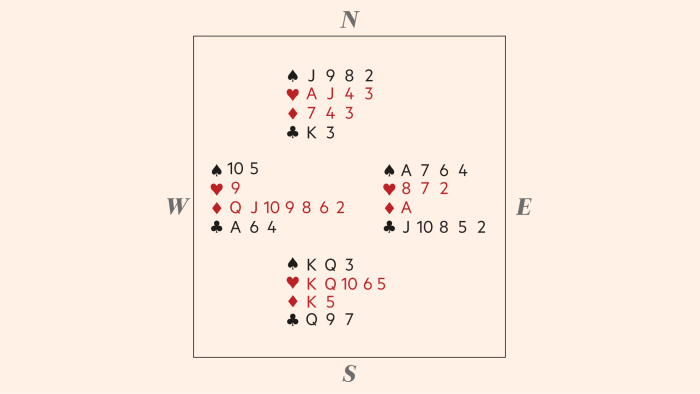Contract bridge: Imaginative lead sets up correct defence

Roula Khalaf, Editor of the FT, selects her favourite stories in this weekly newsletter.
An audacious gambit paid off handsomely for one team — and all they used to achieve it were two twos . . .
Bidding
Dealer: East
N/S Game
The bidding at both tables was the same, North correctly stretching to bid 4H after West’s pre-emptive overcall. If North passes here, South may consider his K♦ useless and decide against re-opening with a take-out double.
At the first table, West led Q♦; East won perforce with A♦. He switched to 4♠, hoping that West might hold A♠ or, if West held Q♠, to squeeze through two quick spade tricks. Declarer won, drew trumps and gave up the two black aces later. 4H made.
At the second table, West decided that the safety of leading Q♦ was less important than indicating where his entry lay, so he opted to lead 2♦. Again, East won but, now, he asked himself why partner had led his seventh-highest diamond?
It must be a clear suit-preference signal for a return of the lower-ranking suit. East therefore returned 2♣ — again a suit-preference signal, asking for the lower-ranking suit to be returned.
West did not need this guidance — the diamond position is clear — but it re-enforced East’s desire for the ruff. This, as well as A♠, defeated 4H, and led to a vulnerable game swing.
Comments